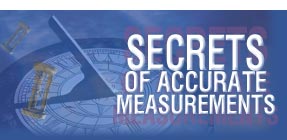 |
 |
 |
| RU |
|
Login
Newsletters
There is no newsletter category found. Information
|
Targeted debugging of MIPI M-PHY interfaces using the new triggering and decoding option for R&S RTO2000 oscilloscopes 09/13/2016 The new R&S RTO-K44 option from Rohde & Schwarz offers powerful triggering and decoding functionality for debugging designs with MIPI M-PHY based protocols. Defined as a physical layer, M-PHY serves as the basis for a number of protocol standards that have been optimized for rapid data transmission in mobile devices. For example, M-PHY is used together with CSI-3 in cameras and with UFS in memory components for multimedia applications. With DigRF Rev.4, UniPort or LLI, the interface is used in chip-to-chip communications. Thanks to the new R&S RTO-K44 triggering and decoding option, manufacturers of compatible processors and communications ICs as well as memory components for mobile phones, tablets and cameras now have a reliable solution for designing, verifying and debugging their products. Integrated circuit designs for high-performance mobile devices such as smartphones, for example, often exhibit problems due to the close proximity of fast digital interfaces and sensitive functional blocks such as radio modules. The R&S RTO-K44 helps designers find the sources of errors related to M-PHY-based interfaces. The new option gives users dedicated access to protocol results in the lowest M-PHY physical layer. The R&S RTO-K44 additionally supports the higher protocol layers of the UniPro standard, which was also defined by the MIPI Alliance. This gives users a great deal of flexibility in selecting an appropriate decoding level for targeted debugging. Targeted acquisition of protocol data is possible thanks to the wide variety of available protocol-based trigger events such as start of frame, data bursts, line control commands (LCC) or various protocol data units (PDU). This data can then be analyzed in detail. The decoded protocol elements are displayed with color coding in a trace diagram or in a table. M-PHY defines a wide variety of data rates (gears) in both low-speed and high-speed transmission mode. Because R&S RTO2000 oscilloscopes offer a bandwidth of up to 4 GHz, debugging is possible for M-PHY implementations up to high-speed gear 2 (HS G2). In low-speed mode, both PWM and NRZ modulation can be used. The option from Rohde & Schwarz decodes both formats and supports multilane applications. The R&S RTO-K44 triggering and decoding option for MIPI M-PHY is now available from Rohde & Schwarz. It extends the Rohde & Schwarz portfolio of oscilloscope applications for MIPI interfaces. Triggering and decoding options for MIPI RFFE and MIPI D-PHY, as well as a compliance test solution for MIPI D-PHY are already available.
Company profile: Rohde & Schwarz Related Information:
Companies' news
KIPiS articles
|
Current issue
Search
|
|
|
| © "Test & Measuring Instruments and Systems" ("KIPiS"), 2000-2024 |

























